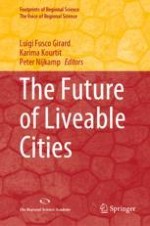2023 | OriginalPaper | Buchkapitel
Green Liveable Urban Futures: The Integration of Nature-Based Solutions into Planning as a Strategy for Regreening the Post-oil City
verfasst von : Steffen Lehmann
Erschienen in: The Future of Liveable Cities
Aktivieren Sie unsere intelligente Suche, um passende Fachinhalte oder Patente zu finden.
Wählen Sie Textabschnitte aus um mit Künstlicher Intelligenz passenden Patente zu finden. powered by
Markieren Sie Textabschnitte, um KI-gestützt weitere passende Inhalte zu finden. powered by
